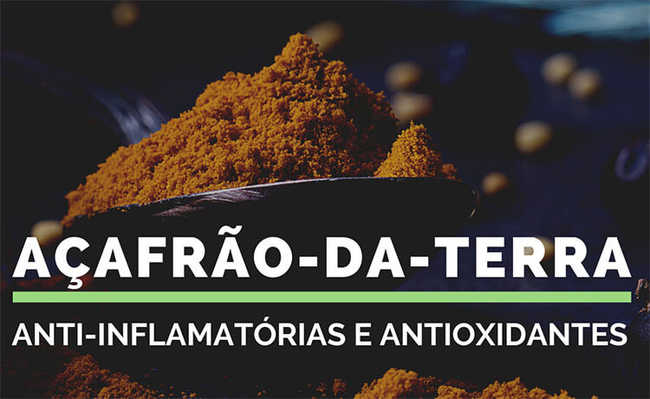What is soy sauce, its risks and benefits
Made from soy and wheat, soy sauce has risks and benefits

Edited and resized image by Caroline Attwood is available on Unsplash
Soy sauce is an ancient Chinese culinary ingredient made from the fermentation of soy and wheat. It is one of the best known soy products in the world, but mainly in Asian countries. How it's produced can vary significantly, causing significant changes in taste and texture, as well as health risks.
- Soybeans: is it good or bad?
- Rice: which option to choose?
- What is buckwheat and its benefits
The word “soy” comes from the Japanese word for soy sauce, “ shoyu ”, a term also used in Brazil (see study about it here: 1). O shoyu it is made from four basic ingredients: soy, wheat, salt and leavening agents such as yeast. But regional varieties can result in different colors and flavors.
How is soy sauce made?
There are many types of soy sauce. They can be grouped based on their production methods, regional variations, colors and flavor differences.
Traditional Production
Traditional soy sauce is made by soaking soy in water and roasting and grinding wheat. Then soybean and wheat are mixed with a fungal culture, most commonly Aspergillus, and are left for two to three days to develop.
Then water and salt are added and the entire mixture is left in a fermentation tank for five to eight months, although some types may age longer.
During fermentation, mold enzymes work on soy and wheat proteins, gradually breaking them down into amino acids. Starches are converted to simple sugars and then fermented into lactic acid and alcohol.
- What are amino acids and what are they for
After the aging process, the mixture is placed on the cloth and pressed to release the liquid. This liquid is pasteurized to kill possible bacteria. Finally, it is bottled (see studies about it here: 3, 4).
The high quality soy sauce uses only natural fermentation. These varieties are often labeled as "naturally brewed". The ingredient list usually only contains water, wheat, soy and salt.
- Salt: origin, importance and types
chemical production
Chemical production is a much faster and cheaper method. This method is known as acid hydrolysis and can produce soy sauce in a few days rather than months.
In this process, the soy is heated to 80 °C and mixed with hydrochloric acid, which breaks down soy and wheat proteins. However, the resulting product is less attractive in terms of taste and aroma as it lacks many substances produced during traditional fermentation. Therefore, extra color, flavor and salt are added (see study on this: 4).
In addition, this process produces some undesirable compounds that are not present in naturally fermented soy sauce, including some carcinogens (see study about it here: 2).
In Japan, soy sauce made in a purely chemical process is not considered soy sauce and cannot be labeled as such. However, it can be mixed with traditional soy sauce to reduce costs.
In other countries like Brazil, chemically produced soy sauce can be sold normally. The label will list “hydrolyzed soy protein” or “hydrolyzed vegetable protein” if it contains chemically produced soy sauce.
regional differences
In Japan, there are many different types of soy sauce.
- Dark soy sauce : also known as "koikuchi shoyu", is the most common type sold in Japan and abroad. It is reddish brown and has a strong aroma (check studies about it here: 2, 3, 5)
- Light soy sauce : also called "usukuchi", is made with more soy and less wheat and has a lighter appearance and a softer aroma (see studies about it here: 2, 3, 5)
- Tamari : Made mainly from soybeans with 10% or less wheat, has no aroma and is darker in color (check studies about it here: 2, 3, 53, 5)
- Shiro : Made almost only with wheat and very little soy, it is very light in color (see study about it here: 3).
- Saishikomi: Made by breaking down soybeans and wheat with enzymes in a solution of unheated soy sauce instead of salt water. It has a heavier flavor, and many like it as a dipping sauce (see studies about it here: 2, 3, 5). However, soy bran and wheat bran are fermented for just three weeks instead of several months. This method results in a very different taste compared to traditionally produced soy sauce (see studies about it here: 2, 3, 6).
Chinese soy sauces are often listed as "dark" or "light" in English. Dark soy sauce is thicker, older, sweeter and used in cooking. Light soy sauce is thinner, younger and saltier, and is most often used in sauces.
In Korea, the most common type of soy sauce is similar to the type of soy sauce. koikuchi dark in Japan.
However, there is also a traditional Korean soy sauce called hansik ganjang. It is made only from soy and used mainly in soup and vegetable dishes (see study about it here: 3).
In Southeast Asian countries such as Indonesia, Malaysia, Philippines, Singapore and Thailand, tamari-style sauce is most commonly produced, but there are many local variations (see study about it here: 2).
Other varieties include sauces thickened with sugar, such as kecap manis in Indonesia, or those with additional flavors like shrimp soy sauce in China.
The nutritional content of soy sauce
Below is the nutritional description of 1 tablespoon (15 ml) of traditionally fermented soy sauce (see study about it here: 7).
- Calories: 8
- Carbohydrates: 1 gram
- Fat: 0 grams
- Protein: 1 gram
- Sodium: 902 mg
This makes it high in salt, providing 38% of the recommended daily intake (RDI). Although soy sauce has a relatively high amount of protein and carbohydrate by volume, it is not a significant source of these nutrients.
Furthermore, fermentation, aging and pasteurization processes result in a highly complex mixture of over 300 substances that contribute to the aroma, flavor and color of soy sauce.
These include alcohols, sugars, amino acids like glutamic acid as well as organic acids like lactic acid.
The amounts of these substances change significantly depending on the basic ingredients, the mold tension and the production method (see studies on this here: 3, 4).
It is these compounds in soy sauce that are often associated with its health risks and benefits.
What are the health risks?
Health concerns are often raised regarding soy sauce, including its salt content, presence of cancer-causing compounds and specific reactions to components such as MSG and amines.
It's high in sodium
Soy sauce is rich in sodium, known as salt, which is an essential nutrient. However, high sodium intake is linked to increased blood pressure, especially in salt-sensitive people, and may contribute to the risk of heart disease and other diseases such as stomach cancer (see studies about it here: 8 , 9 , 10, 11).
In fact, reducing sodium intake results in a modest decrease in blood pressure and may be part of a treatment strategy for people with high blood pressure (see studies on this: 12, 13, 14, 15).
However, it is not clear whether the reduction directly decreases the incidence of heart disease in healthy people (see studies about it here: 13, 16, 17, 18).
Most dietary organizations recommend an intake of 1,500 to 2,300 mg of sodium per day, with the aim of reducing the risk of high blood pressure (see studies on this here: 12, 19 , 20 , 21).
One tablespoon of soy sauce contributes 38% of the current IDR. However, the same amount of table salt would contribute 291% of the HDI for sodium (see studies about it here: 7, 22).
For those looking to reduce their sodium intake, salt-reduced varieties of soy sauce have been developed, which contain up to 50% less salt than the original products (see study about it here: 2).
Despite its high sodium content, soy sauce can still be enjoyed as part of a healthy diet, especially if you're limiting processed foods and consuming mostly fresh, whole-grain foods with lots of fruits and vegetables.
If you're limiting your salt intake, try a reduced-salt variety or simply use less.
May be high in monosodium glutamate
Monosodium glutamate is a flavor enhancer. It is found naturally in some foods and often used as a food additive (see study about it here: 23).
- What is Monosodium Glutamate
It is a form of glutamic acid, an amino acid that significantly contributes to flavor. umami of food. Umami it is one of the five basic flavors of food, often found in what is called “tasty” food (see studies about it here: 24, 25)
Glutamic acid is naturally produced in soy sauce during fermentation and is believed to be a significant contributor to its appealing taste. In addition, MSG is often added to chemically produced soy sauce to improve its flavor (see studies about it here: 2, 5, 26, 27)
In 1968, MSG became associated with a phenomenon known as "Chinese restaurant syndrome".
Symptoms included headaches, numbness, weakness and heart palpitations after eating Chinese food, which is generally high in MSG (see studies on this here: 23, 24).
However, a 2015 review of all studies to date on MSG and headaches found no significant evidence to suggest that MSG causes headaches (see related studies here: 23, 24, 28).
Therefore, the presence of glutamic acid or even the addition of MSG in soy sauce is probably not a cause for concern.
May contain cancer-causing substances
A group of toxic substances called chloropropanols can be produced during food processing, including soy sauce production.
One type, known as 3-MCPD, is found in acid-hydrolyzed vegetable protein, which is the type of protein found in chemically produced soy sauce (see studies on this here: 29, 30).
Animal studies have found 3-MCPD to be a toxic substance. It has been found to damage the kidneys, decrease fertility and cause tumors (see studies about it here: 29, 30).
Due to these problems, the European Union has set a limit of 0.02 mg of 3-MCPD per kg of soy sauce. In the US, the limit is higher at 1 mg per kg (see studies about it here: 30, 31, 32).
This equates to a legal limit of 0.032 to 1.6 mcg per tablespoon of soy sauce, depending on where you live.
However, in recent years, investigations of soy sauce imports around the world, including the US, UK, Australia and Europe, have found products significantly above the limits, with up to 1.4 mg per tablespoon (876 mg per kg), resulting in product recalls (see studies about it here: 30, 31, 33).
Overall, it's safer to choose naturally fermented soy sauce, which has much lower levels or no 3-MCPD.
Contains Amines
Amines are natural chemicals found in plants and animals. They are often found in higher concentrations in aged foods, such as meat, fish, cheese and some condiments (see study about it here: 34).
Soy sauce contains significant amounts of amines, including histamine and tyramine (see studies on this here: 3, 35).
A lot of histamine is known to cause toxic effects when taken in large amounts. Symptoms include headaches, sweating, dizziness, itching, rashes, stomach problems and changes in blood pressure (see studies about it here: 34, 36)
In fact, it has been suggested that some reports of allergy to soy sauce may be due to a histamine reaction (see study on this here: 37).
For most people, the other amines in soy sauce don't seem to cause a problem. However, some people can be sensitive to them. This is usually diagnosed through a supervised elimination diet. Symptoms of intolerance include nausea, headache and rash (see studies about it here: 34).
If you are sensitive to amines and experience symptoms after eating soy sauce, it may be best to avoid it.
In addition, people who take a class of medication known as monoamine oxidase inhibitors (MAOIs) need to restrict their intake of tyramine and should avoid soy sauce (see studies on this: 38, 39)
Contains wheat and gluten
Many people are unaware that soy sauce can contain wheat and gluten. For people with wheat allergies or celiac disease, this can be problematic.
Studies have found that soy and wheat allergens are completely degraded in the soy sauce fermentation process. That said, if you're not sure how soy sauce was produced, you can't be sure it's allergen-free (see study here: 40)
Japanese tamari soy sauce is often considered a wheat-free and gluten-free soy sauce alternative. While this may be true, some types of tamari can still be made with wheat, albeit in smaller amounts than those used in other types of soy sauce (see study on this: 3).
It is important to check the ingredient label for wheat and look for soy sauce products specifically labeled as gluten free. Most major brands carry a gluten free variety.
When you eat out, it's best to check which brand of soy sauce the restaurant is cooking with and ask if they have a gluten-free variety.
If you are unsure, it may be better to choose an uncooked dish with soy sauce.
Soy sauce is also linked to some health benefits.
Research on soy sauce and its components has found some potential health benefits, including:
- May reduce allergies: 76 patients with seasonal allergies took 600 mg of a soy sauce component daily and experienced improved symptoms. The amount consumed corresponds to 60 ml of soy sauce per day (see studies about it here: 40, 41)
- Promotes digestion: A soy sauce broth was administered to 15 people, resulting in increased stomach juice secretion, similar to the levels that may occur after caffeine intake. It is thought that a greater secretion of gastric juice helps digestion (see study about it here: 42)
- Gut Health: Some sugars isolated in soy sauce have been found to have a positive prebiotic effect on certain types of bacteria found in the gut. This can be beneficial for intestinal health (see study about it here: 43).
- Source of Antioxidants: Dark soy sauce has been found to contain several strong antioxidants. It is not clear what the benefits are in humans, although one study has found positive effects on heart health (see studies about it here: 44, 45, 46, 47).
- It could boost the immune system: two studies found that giving mice polysaccharides, a type of carbohydrate found in soy sauce, improved immune system responses (see studies on this: 48, 49)
- May have anti-cancer effects: Several experiments with mice have shown that soy sauce can have cancer and tumor inhibiting effects. More research is needed to verify whether these effects are also present in humans (see studies about it here: 44, 50)
- May lower blood pressure: Some varieties of soy sauce, such as reduced-salt ganjang or Korean, have been found to lower blood pressure in rats. Studies in humans are still needed (see studies about it here: 44, 51 ,52)
It should be noted that much of this research was done only in animals or in very small studies in people and used large doses of soy sauce or its components.
So while some of these results look promising, it's too early to tell whether soy sauce can contribute truly significant health benefits when consumed at the level found in the average diet.










